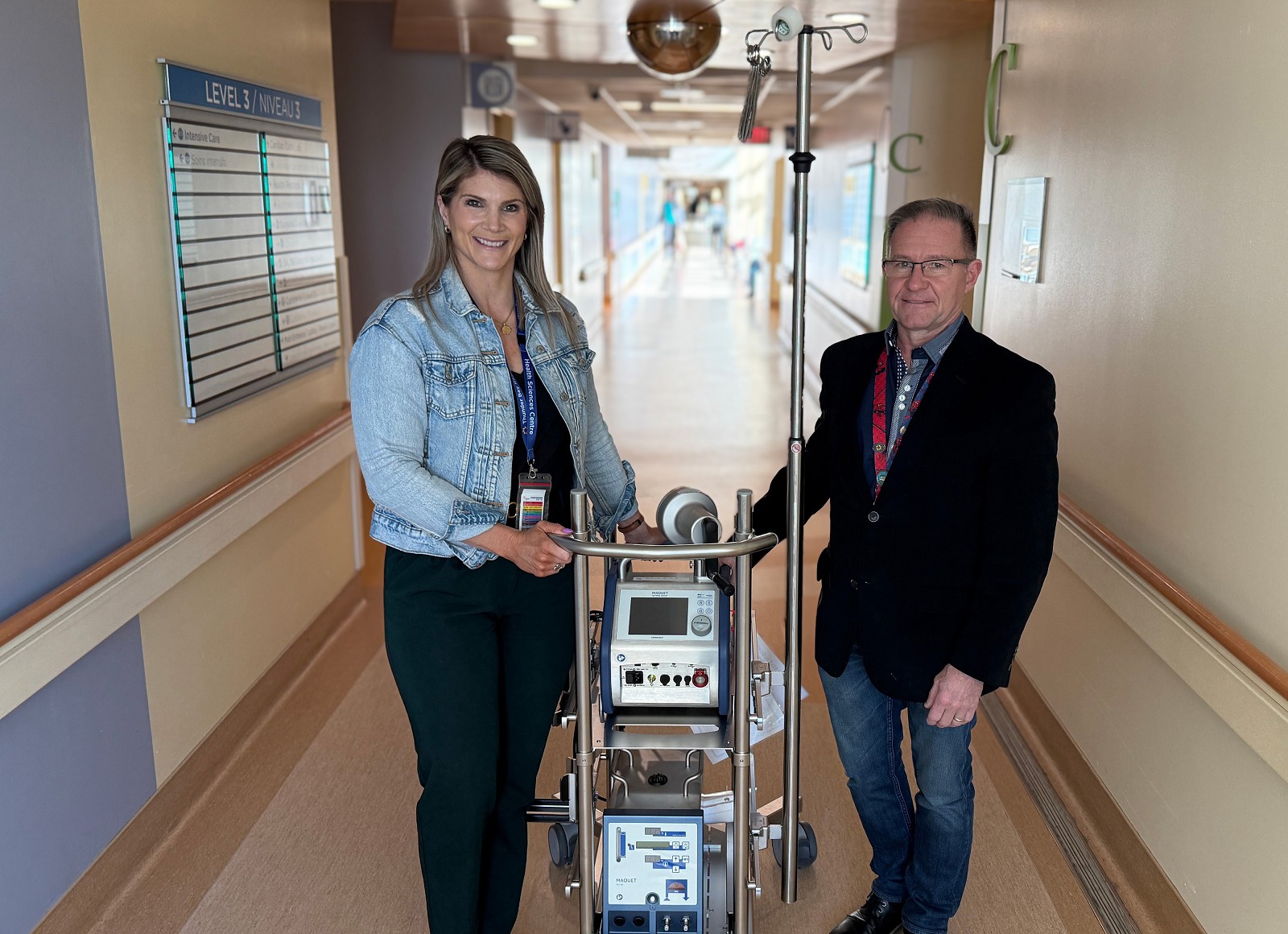Portable Life-support System Helps Safe Transfers to Specialized Care Hospitals across Ontario
Published Monday, May 26, 2025

Pictured (L-R) Tiana Veal, Critical Care Nurse, ICU, Thunder Bay Regional Health Sciences Centre and Dr. Michael Scott, Chief of Critical Care, Thunder Bay Regional Health Sciences Centre.
Give a Donation. Buy a Ticket. Attend an Event. Make a Difference.
For those who have damaged lungs due to disease or injury, breathing can be terrifying. You always feel like you just can't get enough air. Patients in acute respiratory distress often breathe faster, trying desperately to get the oxygen their body needs. This can also put huge strain on the heart. In extreme situations, lack of oxygen or damage to the heart can be fatal if not treated.
“These patients are usually in severe respiratory distress, and their lungs aren't able to get enough oxygen to the rest of their body,” said Tiana Veal, a registered nurse in the ICU.
Thankfully, there is a treatment. The name is a mouthful: venovenous extracorporeal membrane oxygenation or V-V ECMO. The procedure is similar to dialysis, except that instead of cleaning the blood, ECMO removes CO2 and adds oxygen. In critical situations, ECMO is considered a life-saving intervention.
This highly specialized treatment isn't available in Thunder Bay. But thanks to your support of the Thunder Bay Regional Health Sciences Foundation, you're helping more patients get the care they need. Your donations, purchase of Thunder Bay 50/50 tickets, and participation in Foundation events helped purchase a new portable life-support system that will make transporting patients to other hospitals in Ontario safer and more comfortable.
You might expect ECMO to be used mostly for older patients, but in reality, many of the people who need it are younger, otherwise healthy individuals suddenly threatened by severe illness or injury. In Ontario, there are seven hospitals that provide ECMO for people with severe respiratory distress. The closest ECMO site to Thunder Bay is over 1,000 kilometres away.
“When we're considering transferring a patient for V-V ECMO, they're critically ill,” Veal said. “In some cases, they're too unstable to make the flight. But with the ECMO console, we can now start treatment earlier and stabilize them here. This gives the patients a better chance of making it safely for ongoing care and treatment.”
A program like this requires more than new equipment. It needs policies, procedures – and professionals.
“To initiate ECMO treatment, a procedure called cannulation is performed, which involves inserting catheters into the patient's large veins to establish a connection with the machine,” Veal said. “This procedure is carried out by an intensivist, which is a physician specializing in critical care.
“A perfusionist, who is responsible for operating and managing the ECMO machine, must be present during this process and throughout treatment. In addition, ICU registered nurses are required to undergo specialized training to provide safe and effective care for patients on VV-ECMO.”
The V-V ECMO program is an accomplishment that's literally saving lives. And you helped bring it to Thunder Bay. The portable ECMO console is one more example of how your support of the Health Sciences Foundation changes lives in Northwestern Ontario every day.
Article by Graham Strong